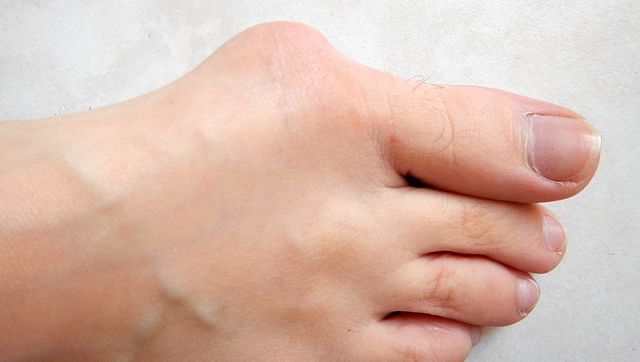Bunions
What is a Bunion?
A Bunion describes a sweeping and often rotating deformity of the big toe. The big toe is angled towards the smaller toes in the foot, and there is a notable bony prominence at the joint between the big toe and the foot. Bunions come in many shapes and sizes and affect people in different ways. The most common issue is pain at the bony prominence, due to pressure in shoes, and the associated difficulty with shoe wear.
What causes a Bunion?
Despite the commonly repeated message about high heels and poor shoe
choices -- while that can contribute to Bunion development -- Bunions
are actually thought to have a significant genetic component in their
formation and progression. Often, patients recall grandparents, aunts,
uncles and other family members with bunions.
How do we treat Bunions?
Bunions are often treated by first modifying shoe wear, using toe
spacers, bunion pads and braces and even shoe stretches. The primary
goal of treatment is to manage the pain associated with bunions. For
many patients, symptoms are controlled with the above measures so that
additional treatment is not required.
For those who have persistent pain and difficulties with shoe wear, despite the options above, there are surgical options available.
Bunion Surgery
For those with persistent pain and deformity, your Orthopaedic Foot
and Ankle surgeon might recommend surgery to address your bunion.
IMPORTANT: Bunion surgery is not recommended simply for cosmetic
concerns. The surgery is recommended to improve pain and shoe wear
difficulties.
The manner in which your surgeon chooses to correct your Bunion depends on a number of factors, including, but not limited to: the degree of deformity and rotation of your big toe, the presence and degree of arthritis in nearby joints, whether there is flattening of your arch, or laxity in surrounding joints. These and other factors help your surgeon decide how best to correct your bunion. Typically a bone cut, an osteotomy, is performed as part of the correction. Below are a sampling of the types of corrections that are typically employed to correct Bunions. Your surgeon might use some of these terms in describing your procedure.
- Akin Osteotomy - A wedge of bone is removed from the base of the big toe and secured with a wire or screw. This is often done in combination with other bone cuts, to improve the overall position of the great toe.
- Chevron Osteotomy - Bone cuts are made in the bone just upstream of the base of the big toe. The resulting bone fragment is shifted over and secured in place with a screw or wire. This can be combined with other procedures.
- Modified McBride Procedure - Describes primarily soft tissue and tendon releases between the great toe and second toe, combined with tightening of the joint capsule at the opposite side of the great toe, while leaving the small sesamoid bone closest to the 2nd toe in place. Additionally, the bony prominence on the inside of your great toe is shaved as well. This is often done with other procedures as well.
- Ludloff Osteotomy- This describes an angled cut of the bone just upstream of the great toe, which allows the surgeon to slide a portion of the bone over into a better position. This is then secured with wires or screws.
- Scarf Osteotomy - This osteotomy provides a stronger correction than some of the previously mentioned options. It involves essentially a z-shaped cut of the bone just upstream of the great toe. A fragment of bone is then slid over and secured as mentioned above.
- Lapidus procedure - This is a fusion procedure, using the next joint upstream from the great toe. Unlike the other procedures, your surgeon will likely require to avoid walking on your foot for an extended period of time. This is done to ensure maturation of the fusion. This fusion involves scraping cartilage from the joint and performing an angled correction through the bone, at the joint level. Your surgeon may also use your bone, or donor bone tissue to encourage maturation of the fusion.
As with all surgical procedures, you and your surgeon will discuss the various options available and decide which type of procedure makes the most sense for your foot. Remember, there are options for symptom management prior to surgery. If you suffer from pain and deformity of your big toe, please contact a Resurgens Orthopaedic Foot and Ankle specialist to have it evaluated.
If you or someone you know is suffering from bunion pain, please request an appointment with one of our ankle experts at Resurgens Orthopaedics.
Written by: Philip Walton Jr., MD
Orthopaedic Surgeon
Foot & Ankle and General Orthopaedics Specialist